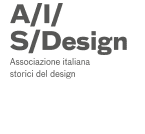Adrian Shaughnessy
Changing Attitudes to Graphic Design History in the Digital Age
Amongst young designers born in the age of universally accessible interactive media – digital natives – design history has been, at best, a subject of only casual interest. For many, the shiny newness of digital media has rendered the past obsolete. And indeed, when the digital present is so manifestly different from the mechanical past, and when so few elements of the new digital terrain have obvious historical antecedents, the temptation to look backwards is not great.
But something is stirring amongst the onrush of newness and novelty. It can’t yet be called a movement, nor yet a paradigm shift. Rather, it is the realisation that as the future becomes more and more dominated by digital platforms, strategies and methodologies, the reality for many thousands of graphic designers is that their role is increasingly marginalised. In the world of web design, user interface design and social media, design is no longer the sole province of the designer: today, design is produced by utilising existing templates, by working under the supervision of web developers, and by other forms of collaborative activity. It’s a trend reflected in some recent research (see www.hoogslag.nl) which shows that design students in Holland are rejecting web design as a subject of study, despite the strong likelihood that the greatest number of employment opportunities exist in this sector.
Suddenly, to eyes disenchanted with the world of digital creativity – and the increasing abandonment of printed platforms such as posters – design from the past seems more expressive and more accommodating to the individual. In my paper, I hope to show how graphic design’s past is being viewed afresh from the idealistic viewpoint of the designer as individual creator. I intend to discuss the critical role of the internet and its extreme suitability for archiving and studying the past, and how new paradigm shifts in publishing are causing the book to be revered and reappraised.
Adrian Shaughnessy spent 15 years as creative director of Intro, the design studio he co-founded in 1989. In 2004, he left to pursue an interest in writing and lecturing, and to work as an independent design consultant. He has written and art directed numerous books on design. His book, How to be a Graphic Designer Without Losing Your Soul, has sold 80,000 copies to date, and has been issued in numerous foreign language editions. His most recent book is a study of the life and work of FHK Henrion. Shaughnessy writes regularly for all the leading graphic design journals. Between 2004 and 2010, he had a monthly column in Design Week. He is also a contributing writer to Design Observer, the influential design blog. In 2010 he was elected to AGI (Alliance Graphique Internationale). He hosts an occasional series of one-hour radio shows on Resonance FM called Graphic Design on the Radio. In 2012, he received an Honorary Degree from UCA (University of the Creative Arts). In 2009, Shaughnessy was awarded a Visiting Professorship at the Royal College of Art, London. The following year he was appointed Senior Tutor, a permanent position on the College’s visual communication programme.
Shaughnessy is co-founder of the publishing company Unit Editions.
www.uniteditions.com
website www.uniteditions.com




